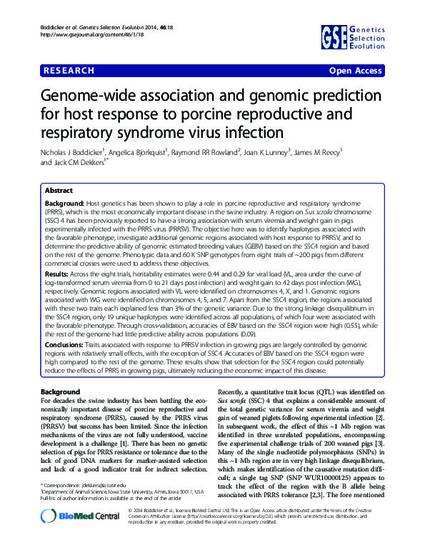
As consumers continue to request food products that have health advantages, it will be important for the livestock industry to supply a product that meet these demands. One such nutrient is fatty acids, which have been implicated as playing a role in cardiovascular disease. Therefore, the objective of this study was to determine the extent to which molecular markers could account for variation in fatty acid composition of skeletal muscle and identify genomic regions that harbor genetic variation. Subsets of markers on the Illumina 54K bovine SNPchip were able to account for up to 57% of the variance observed in fatty acid composition. In addition, these markers could be used to calculate a direct genomic breeding values (DGV) for a given fatty acids with an accuracy (measured as simple correlations between DGV and phenotype) ranging from -0.06 to 0.57. Furthermore, 57 1-Mb regions were identified that were associated with at least one fatty acid with a posterior probability of inclusion greater than 0.90. 1-Mb regions on BTA19, BTA26 and BTA29, which harbored fatty acid synthase, Sterol-CoA desaturase and thyroid hormone responsive candidate genes, respectively, explained a high percentage of genetic variance in more than one fatty acid. It was also observed that the correlation between DGV for different fatty acids at a given 1-Mb window ranged from almost 1 to -1. Further investigations are needed to identify the causal variants harbored within the identified 1-Mb windows. For the first time, Angus breeders have a tool whereby they could select for altered fatty acid composition. Furthermore, these reported results could improve our understanding of the biology of fatty acid metabolism and deposition.
Available at: http://works.bepress.com/james_reecy/73/

This article is from BMC Genomics 14 (2013): 730, doi:10.1186/1471-2164-14-730. Posted with permission.